Pros and cons
Carpeting in the kitchen has a number of undeniable advantages:
- Comfort. Any textile serves as decoration, makes the space more lively and comfortable. The kitchen is no exception.
- Warmth. Those who like to walk around the house barefoot will probably feel uncomfortable standing on the bare cold tiles in the work area. A kitchen with carpet on the floor will easily solve this problem.
- Extending the service life of the flooring. Even materials with high wear resistance sooner or later begin to wear out in places of constant use – for example, near the stove or sink. Small rugs in these places will help protect against wear or cover up existing bald spots.
- Changing the geometry. A properly selected rug will help visually expand a narrow kitchen, a round rug will make the right accent.
- Zoning. The dining area is always more cozy, as opposed to the functional one – why not use a cozy rug under the table to further separate the dining area from the work area.

We must not forget about the disadvantages:
- High probability of contamination. Kitchen chores involve the active use of coloring or fatty foods, water, drinks. Carpets easily absorb any dirt, and most textiles are also difficult to clean.
- Reduced service life. Again, due to constant contamination and cleaning.
- Complex maintenance. It is much easier to sweep crumbs from tiles and wash floors than to clean a carpet.
All the disadvantages are cancelled out by the right choice: the carpet should be practical, preferably with a dirt-repellent coating. Choose small soft mats that can be washed in a regular machine. More about the choice in the next two sections.
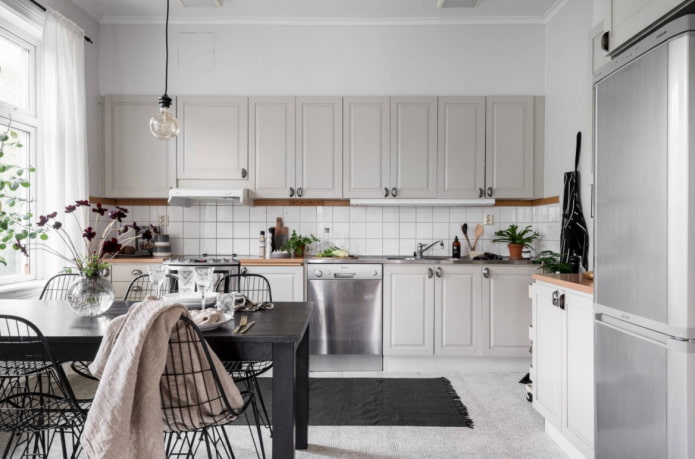
The photo shows a rug in a scandi kitchen
What carpet material should I choose?
Carpets can be short-pile, long-pile, lint-free, homespun, woven, knitted. In the kitchen, short-pile, “bald” models or homespun rugs are used. The first two are easy to clean from small crumbs with a vacuum cleaner, the latter is easy to wash by hand or in a machine.

The photo shows two identical rugs in the work and dining areas
Based on their composition, soft rugs are divided into 2 types:
- Made from natural materials. It is pleasant to walk on wool, it is soft and cozy. Woolen mats last for many years, but it is better to avoid wet cleaning – they take a long time to dry, so an unpleasant musty smell may appear. Rugs made of natural plant fibers (linen, cotton) are thinner, but no less durable. They are washable, which is a significant advantage.
- Made of synthetic materials. Nylon is similar to wool in its characteristics, but it fades, so it is not suitable for sunny kitchens. Polyester is elastic and resistant to deformation – ideal for the work area. Smooth polypropylene is protected from dirt and water – an excellent choice for the kitchen.
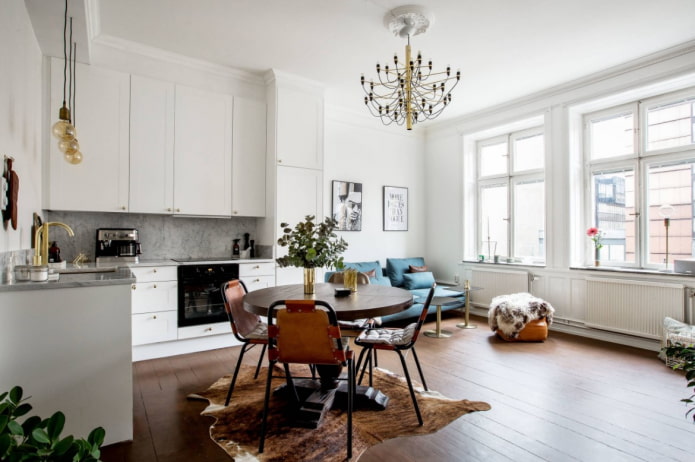
In addition to soft rugs, there are also stylish bamboo mats. They protect your feet from the cold, produce a massage effect – an excellent option for standing at the stove for a long time. They are not afraid of wet cleaning, so if something falls on the mat during cooking, wash it without fear.
Advice! For slippery tile floors, buy models with rubberized bases or buy a separate underlay – this is a matter of safety for you and your loved ones.
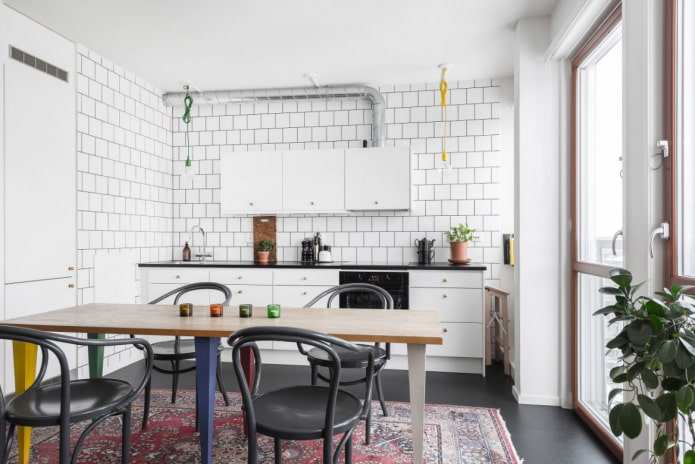
The photo shows a carpet in the Scandi style
What size and shape to choose?
The choice of dimensions depends on the layout of the kitchen, the intended place of use. For example, it is convenient to lay a narrow long path along the worktop, especially if the center is occupied by a table or island.
When the center is free, large rectangular or square carpets are laid, slightly not reaching the base of the furniture. Large models look especially impressive next to U-shaped kitchen units.

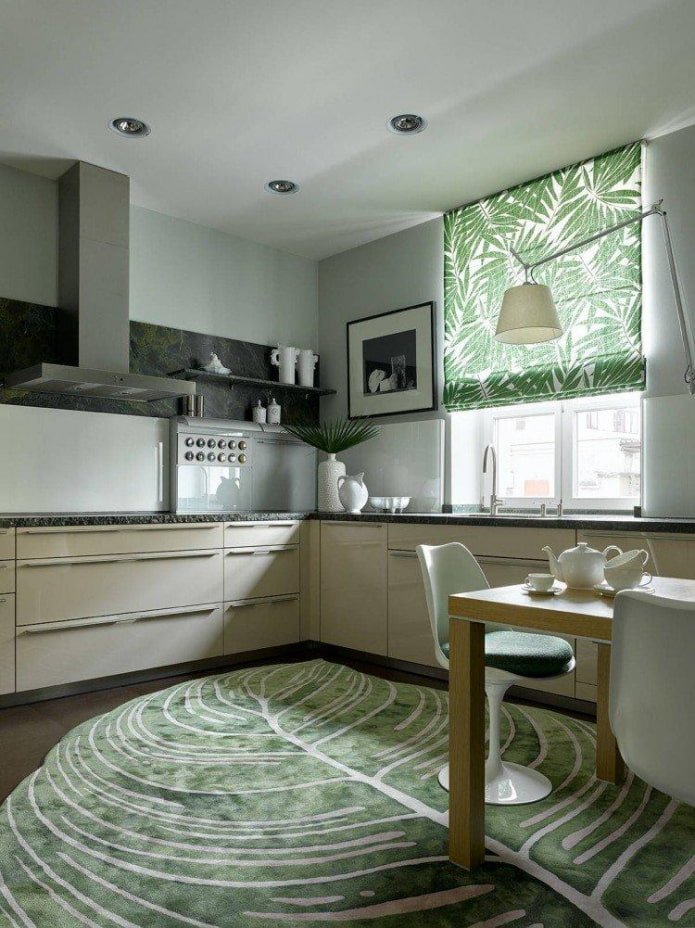
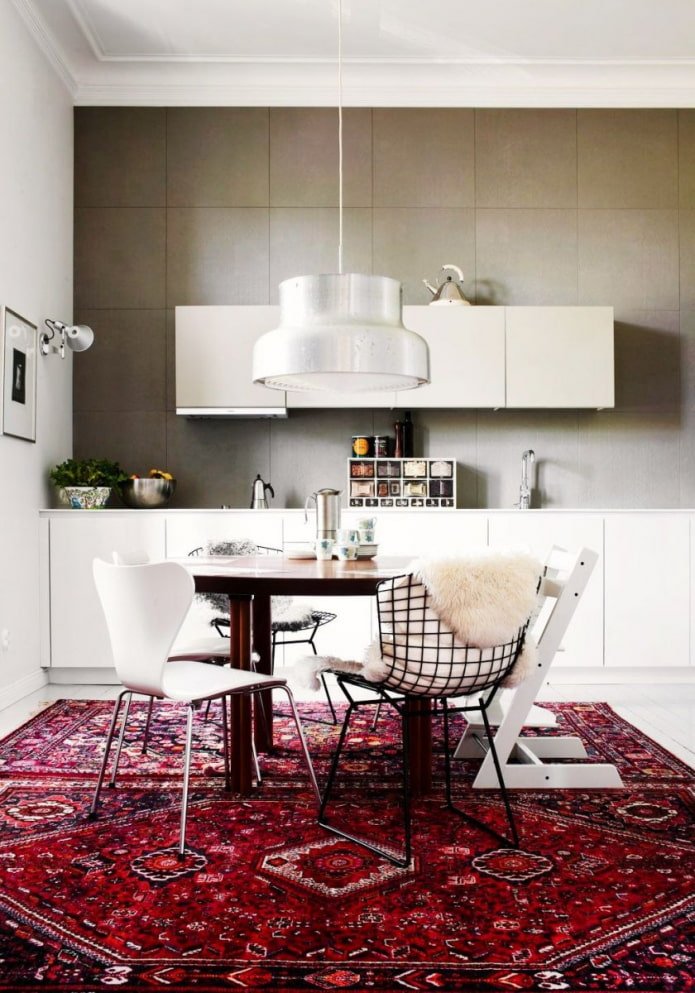
Tables in the dining area in the shape of a circle or square you need the same round or square carpet. Rectangular and oval ones are placed under elongated ones.
The size is selected in accordance with the dimensions of the dining room: pull out the chairs as if someone is sitting on them, measure the diameter, or the length and width. To be on the safe side, so that the furniture does not go beyond the edges, add 20-30 cm to each indicator – these are the ideal dimensions for your kitchen.

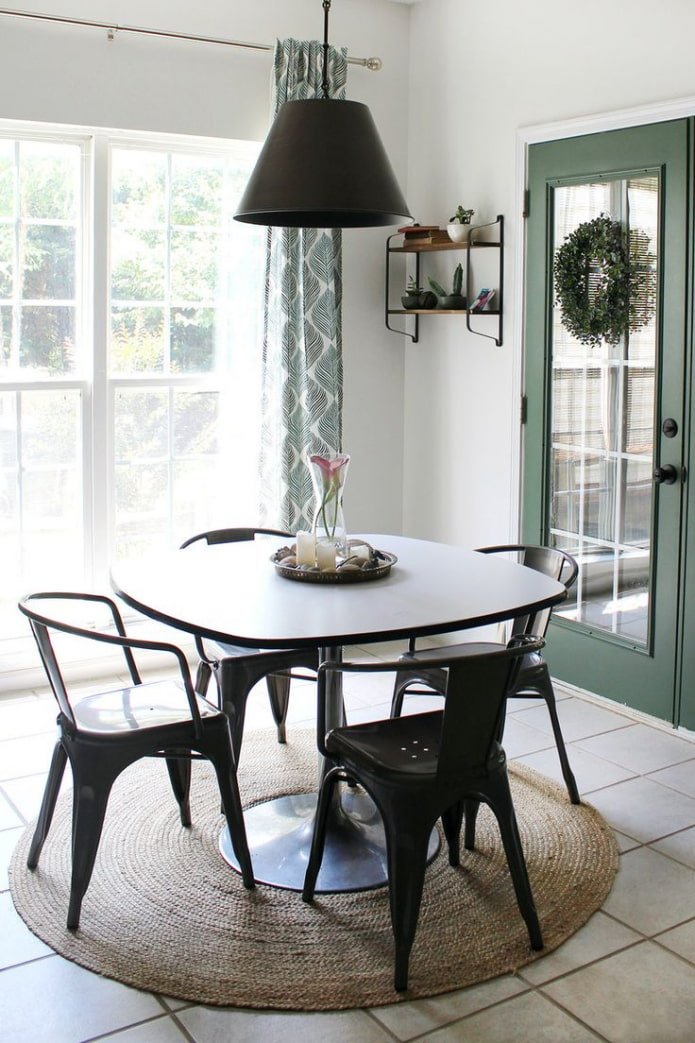
How to choose a color scheme?
The color scheme should match the overall style and design. The carpet either complements the picture or serves as a bright accent. In the first case, the shade should echo the decoration and furniture.
Neutral shades are not necessarily suitable – an orange carpet will complement the orange set. Red and black – red with a black pattern.

The photo shows a U-shaped kitchen in the studio
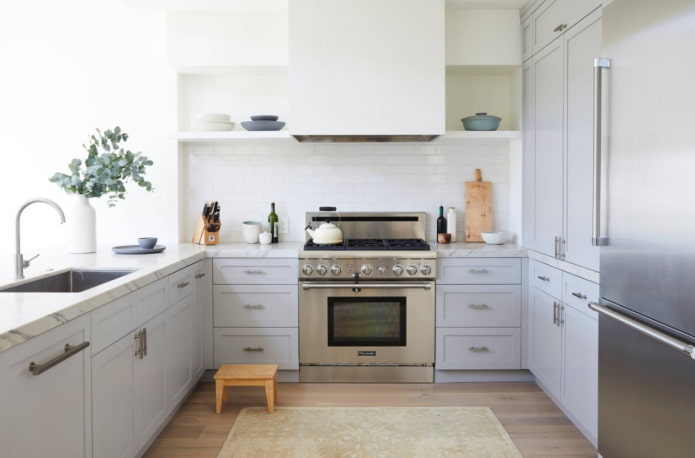

The emphasis is usually placed not only on carpet, but on textiles in general – then the rug is matched to the curtains, tablecloth (or vice versa). In a light-colored kitchen, any bright tone will become a color spot. Initially, the dark range is diluted with light variations.
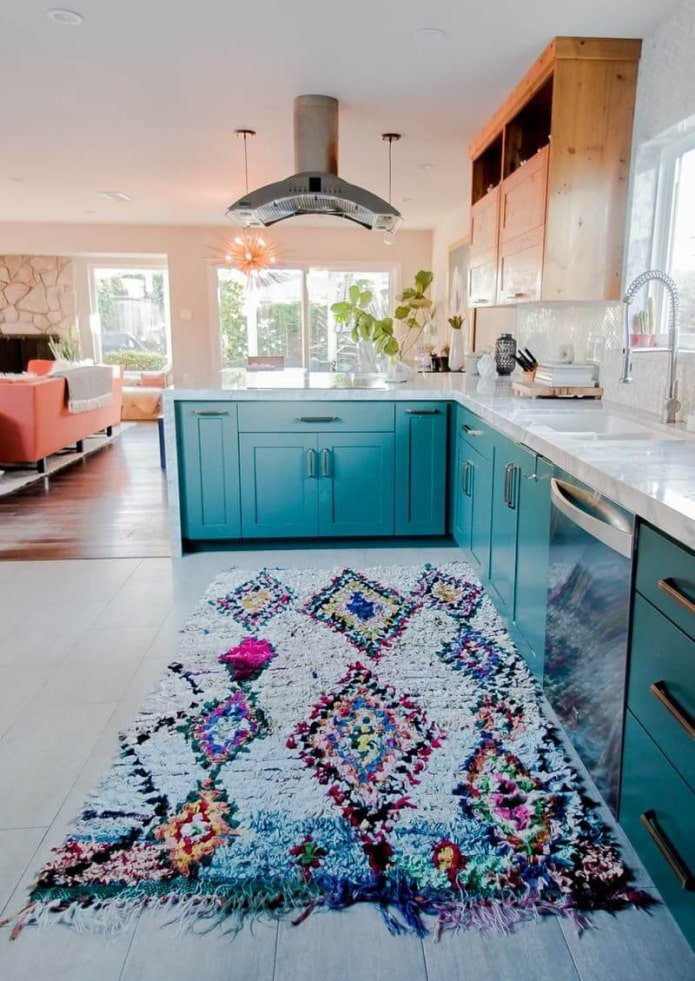
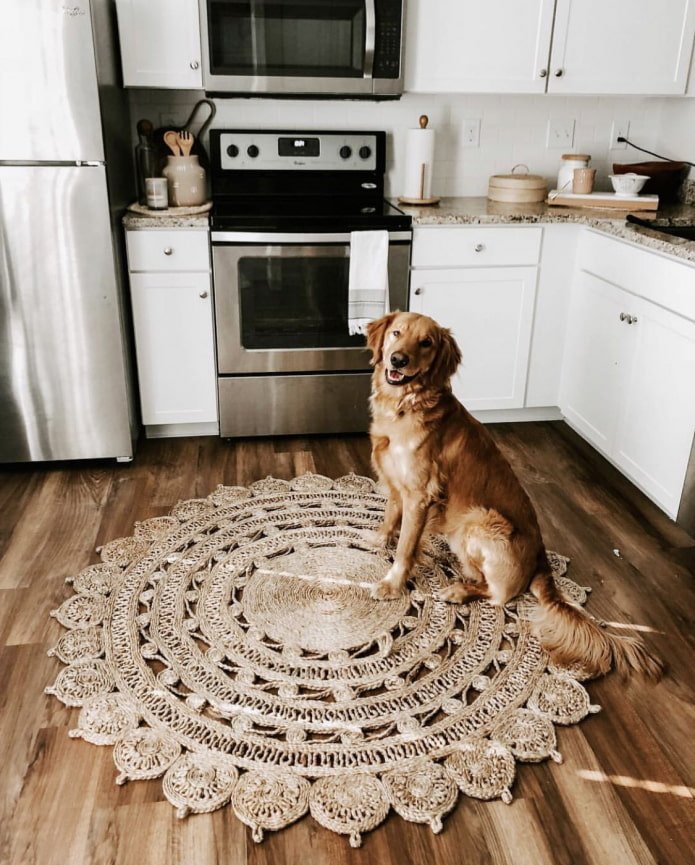
Where is it better to lay it?
The choice of location depends on the specific task: to protect your feet from the freezing tiles, you will need a path along the countertops or, at a minimum, small mats in the sink and stove area.

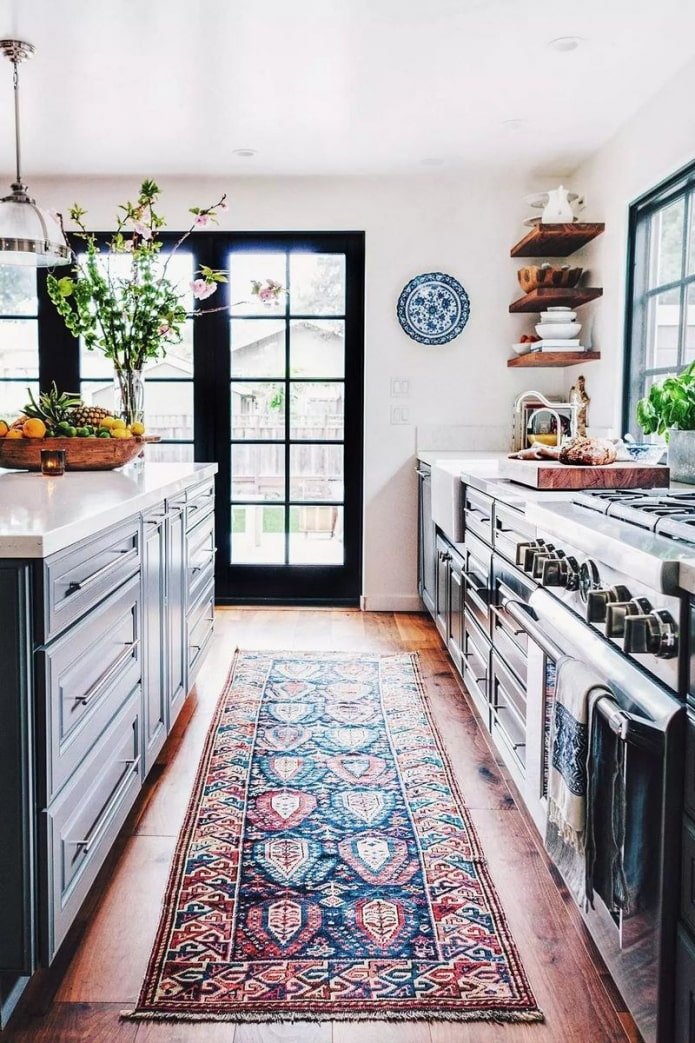
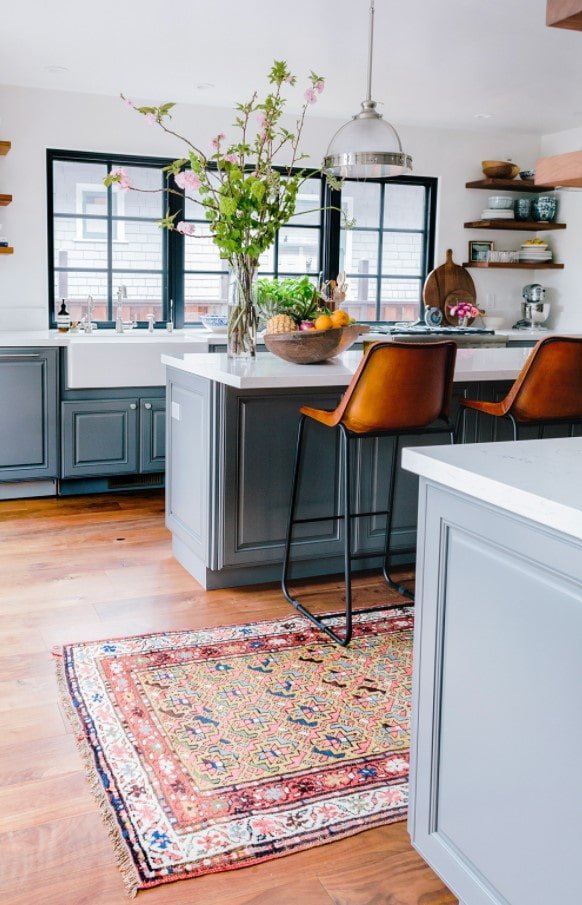
In large kitchens with an island in their home, they often highlight the island with a rug, laying a pad underneath it that is 40-50 cm larger on each side. The ledges perform the same function as the runners: they retain heat and make the cooking process more comfortable and cozy.
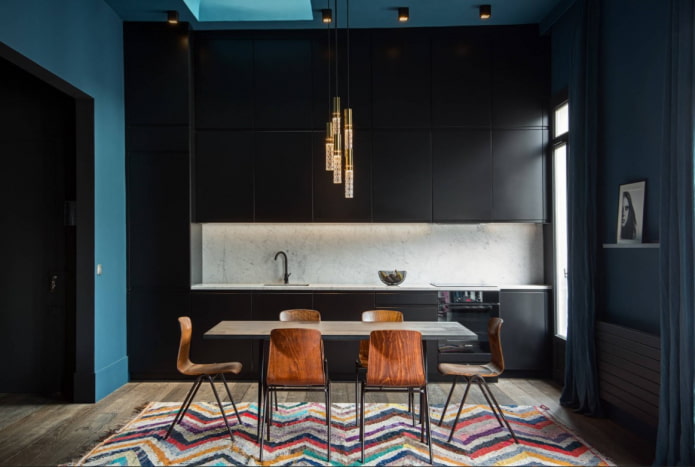
The photo shows a dining table on a rug
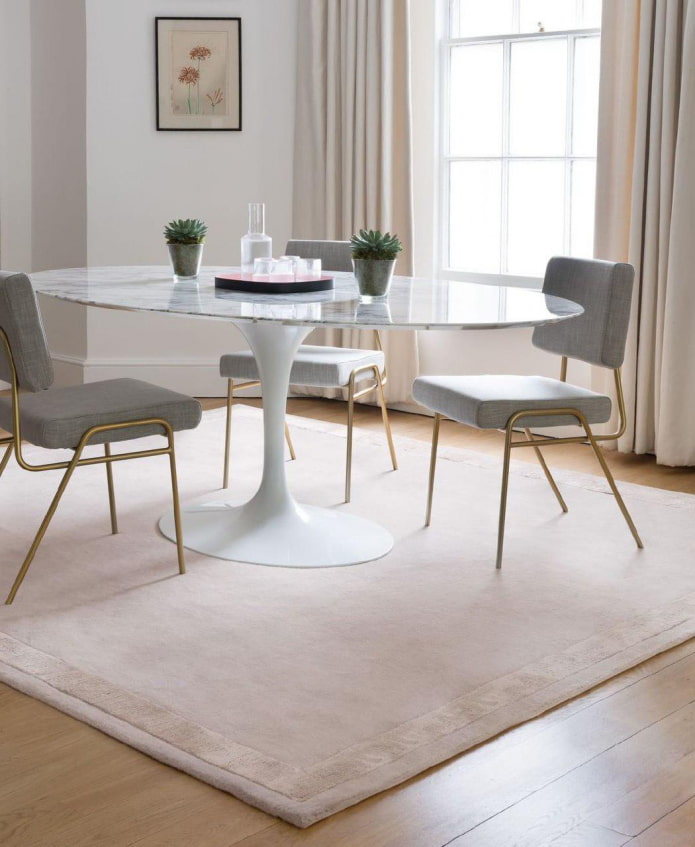
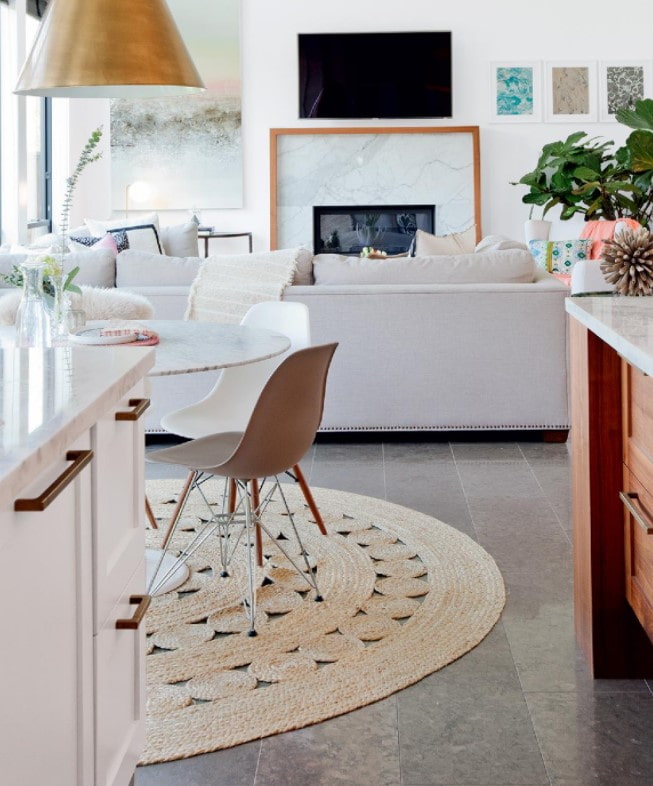
For those who spend a lot of time at the dining table – like to gather with family, friends, rugs are necessary under it. Do not forget that the rug should also fit chairs, and not just a table.

Care recommendations
How to properly care for the decorative coating depends on the material from which it is made. General requirements are as follows:
- Focus on dry cleaning. Use a vacuum cleaner or a dry brush to remove crumbs and other debris from the surface every 1-5 days (depending on the intensity of cooking).
- Remove stains quickly. You can’t hesitate, especially if the carpet is not specially impregnated. The faster you remove the stain, the less damage you will cause to your carpet.
- Have it dry cleaned annually. Call professionals to your home, or better yet, take your carpet to be cleaned – they will remove stubborn stains, foreign odors, and refresh the pile.
- Use only special products. Too aggressive detergents can cause color loss, so it is safer to have a product designed for your carpet model on hand.
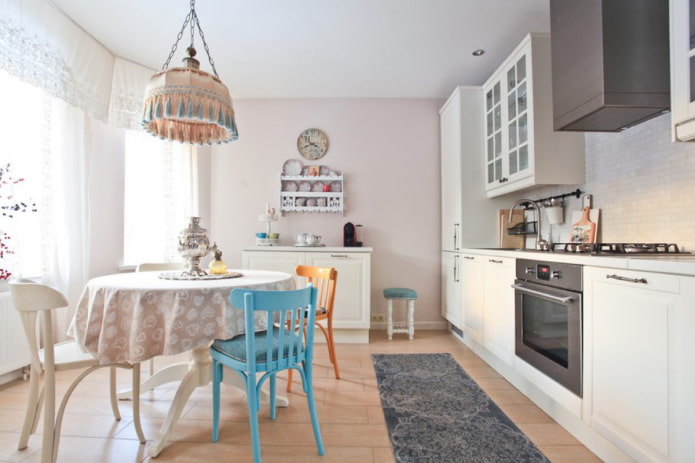
How does it look in the kitchen interior?
Modern carpets for the kitchen are distinguished not only by special protective impregnations, but also by a variety of designs. The easiest way is to match the appearance of the flooring to the style of the room.
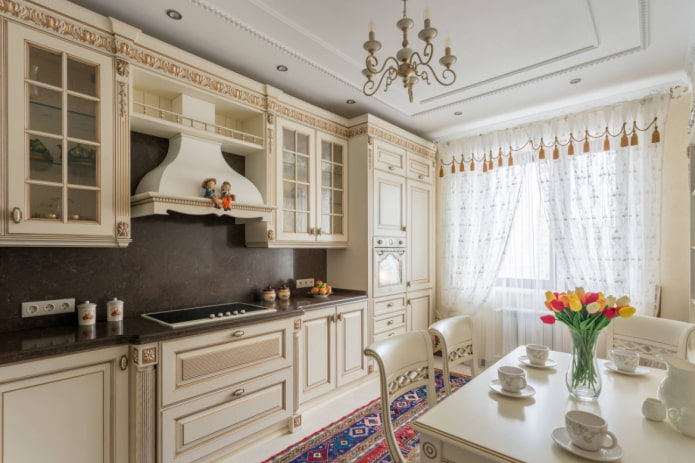

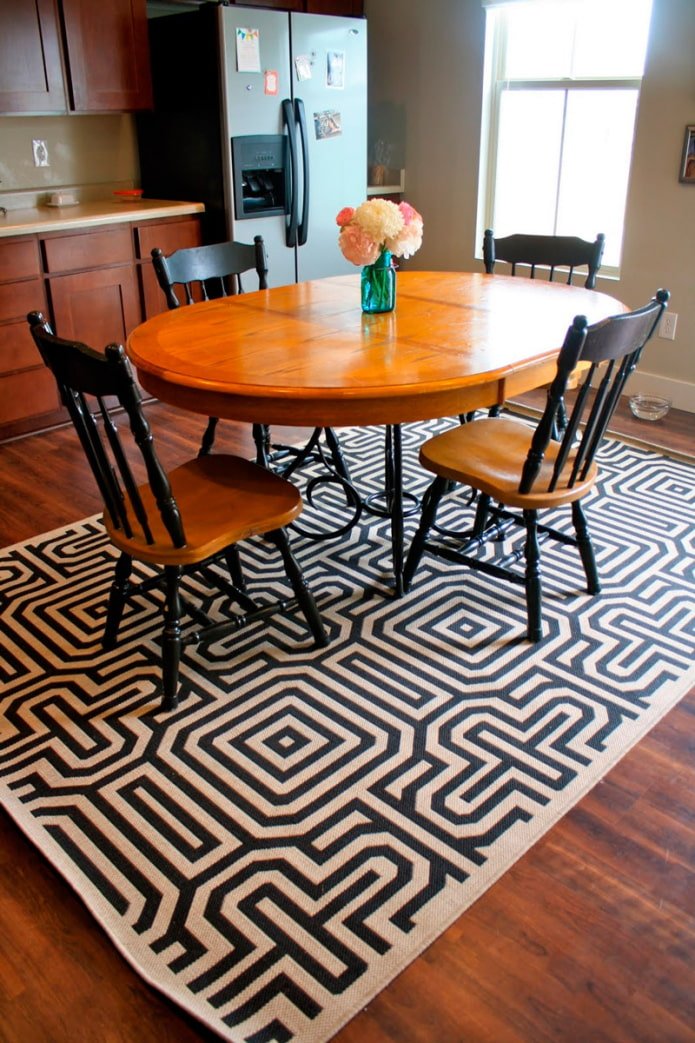
- Classic. Light beige, gray rugs with short pile, beautiful pattern in the form of monograms, floral motifs.
- Loft. A lint-free model with “scuffs” will fit perfectly.
- Scandi. A white kitchen can be complemented by a red oriental rug or neutral homespun runners.
- Country. Imitation skin, homespun rugs, and carpets with floral patterns will do.
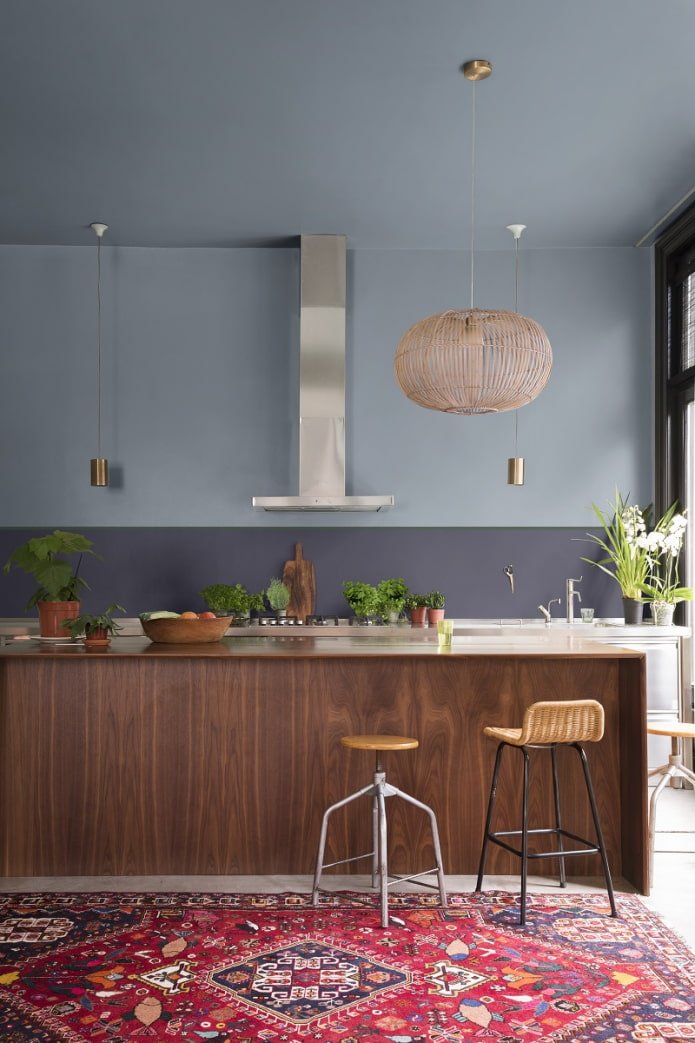
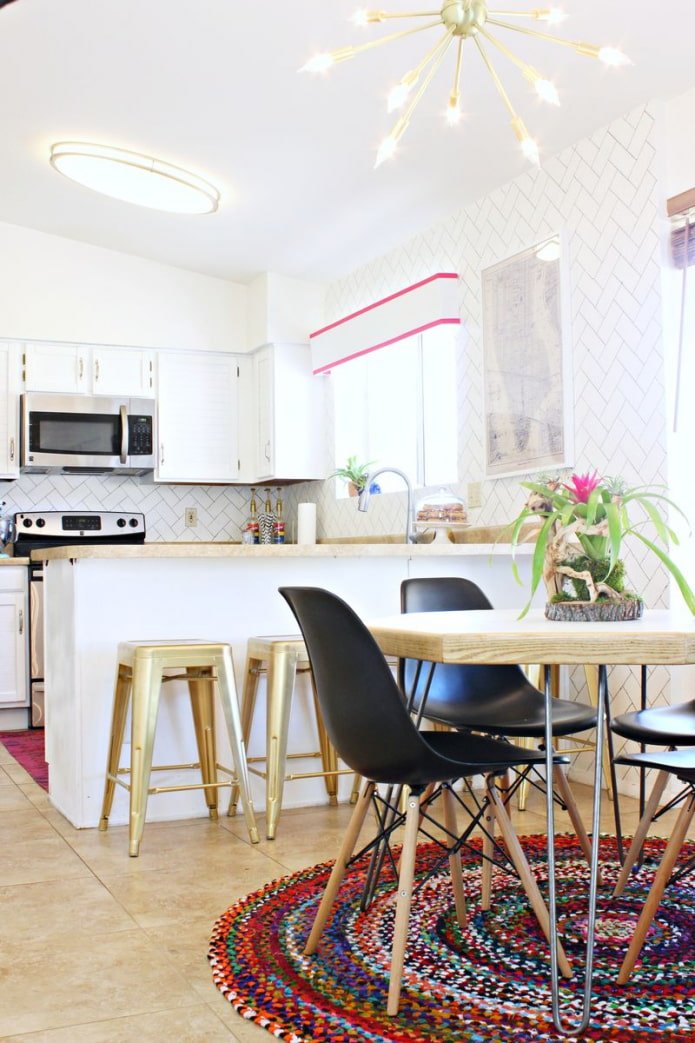
Not every kitchen needs rugs, but if you want to complement the space with floor decor, now you know how to choose the right one.
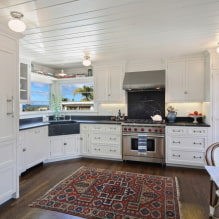
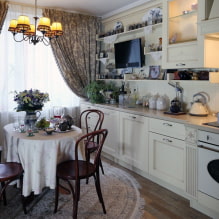
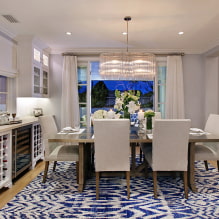
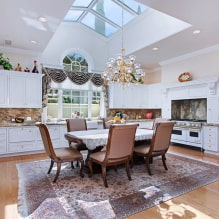
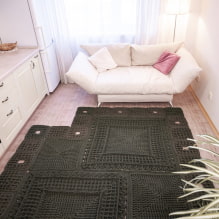
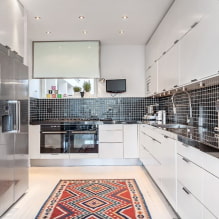
Now reading:
- Sofas for the living room: 70+ photos and modern interior design ideas
- Linen curtains for the interior: more than 80 photos and the best design ideas.
- 10 Most Popular Leroy Merlin Products That Are Necessary in Every Home
- Choosing laminate for the hallway: advantages, disadvantages and 26 design photos.
- Choosing the color of the walls in the kitchen: 70 photos and current color combinations.